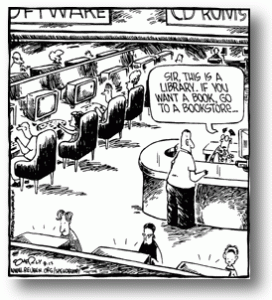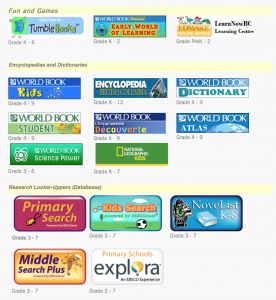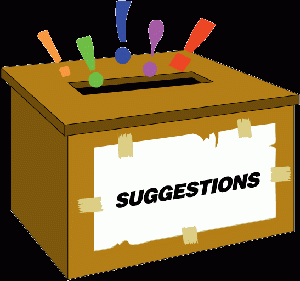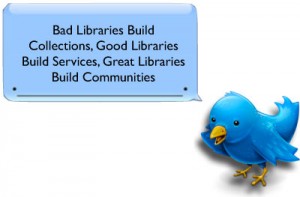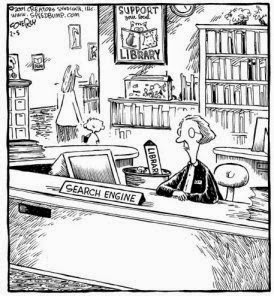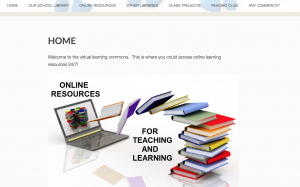“Successful reference services for school librarians consist of three components: 1) knowledge of the library media collection, electronic information resources, and tools; 2) effective conversational skills (communication); 3) competence in selecting, acquiring, and evaluating resources to meet students’ needs. Corresponding with these three components are two basic functions of library media centre services: 1) the provision of information and 2) instruction or guidance in the use of information sources.” (Riedling, Shake & Houston, 4-5)
Evaluation of the Current Status
When evaluating the reference services in my school library based on the above Riedling, Shake & Houston’s definition of successful reference services, I focused on two areas: 1) Staff and student use of print and online reference resources and 2) the collaboration among the teacher-librarian (TL), teachers, and students. Through my observation and interviews with classroom teachers and students, I was able to identify three areas of concern which lead to the unsuccessful of the library reference service.
1.Library Schedule
At my school is a small school with 9 classes in total. The TL entitles to 1.5 days per week at the school, and follows a “fixed or rigid schedule” (Toor & Weisburg, 55) in order to provide contractual preparation time to primary classroom teachers. Each primary class, from kindergarten to a grade 4/5 multi-aged, is scheduled for one 40-minutes period of library time per week. Each intermediate class, the two grade 6/7 classes at my school, is scheduled for one-20 minutes period of book exchange time per week. There are two 40-minutes periods of collaboration time which provide opportunities for classroom teachers to teach collaboratively with the TL. However, the collaboration time is open for voluntary signup by classroom teachers, it has not been fully utilized due to the unresponsiveness of the teachers.
Teachers and students would use the in house reference resources when they conduct research of information in the library on the day that the TL is absent at the school. When I questioned the students and teachers that I interviewed why they did not approach the TL for service, both students and teachers responded that there is no time in the fixed schedule to provide opportunity for one-on-one reference services. Teachers, in particular, expressed that it has been a challenge to find a time, before or after school, to plan for collaboration teaching with the TL. It is understood by teachers that the entitlement of the TL at the school is decided by the district, it is not a choice of the TL. The TL has done her best in providing satisfactory services, unfortunately, it is the time constrain that caused students and staffs to seek for alternatives instead of the reference services provided by the TL.
2. Print & Online Reference Resources
In order to understand students’ practice in the inquiry process of information, I surveyed the grade 6 and 7 students at my school. Only 3 out of 43 students expressed that they had used the print reference resources, such as the World Book. The rest of them expressed that they mainly use Google for their research project. When the students are questioned why they did not use the print resources, they responded in unison that the print resources in the library are outdated, and online search is fast and convenient. It is true that the reference resources are outdated. The school library houses two sets of World Book, with the latest set dated year 2008. All other reference resources, such as dictionaries, thesauri, encyclopedias, atlases, etc, are dated between 1985 to 2003. According to Riedling, Shake & Houston (2013), print reference resources should be replaced with latest edition every 5 years. In conclusion, the update of the print reference resources at my school library are far overdue.
Consequently, I asked the students if they are aware of the school library digital reference database. Sadly, none of the students is aware of the online database that they could access from home. As as result, they rely on Google for research of informations, rather than the reliable and trustworthy resource: the school library database.
3. Lack of interaction between the classroom teachers and the TL
Through conversation with my colleagues, I learned that the interaction between the classroom teachers and the TL is when the teachers drop off or pick up the class at the library, or when the teachers request for non-fiction books on certain themes. This is the TL’s first year at my school, and it is understandable that either the TL or the classroom teachers are acquaintance with each other enough to initiate collaboration. However, respectful interaction is essential in “developing the relationships that are crucial to future collaboration.” (Toor & Weisburg, 87) With minimal interaction (ex. casual chat in the staff room at lunch), trust could not be built strong enough between teachers and TL to lead to collaboration.
Rationale for change
In conclusion of the above evaluation, the school library falls short in providing updated print resources, and in providing support and guidance in the inquiry process of information. Change is unavoidable and is the key to the improvement of the reference services in the school library. Purchasing new, updated non-fiction books would be possible within the annual budget of the library, however, the chance of purchasing updated print World Book would be slight. As stated by the administrator, the district has paid for the subscription of the World Book Online, as a set of print World Book is over $1000, the district or the librarian would rather spend the money on other resources. Having that in mind when I plan for the change, I focus on improving the service instead of the physical collection. Hence, I have set two goals for the change:
- To advocate the library reference resources (print and digital) and services;
- To build relationship, initiate collaboration and work in partnership with teachers and students.
Improvement Plan
“Teacher has no reason to change. As far as they can tell, they have been doing fine without you…But of course, they do have a reason to change. You know collaboration brings better results.” (Toor & Weisburg, 88)
Change will not happen in a day, it takes time and persistent. I anticipate the following three actions that I could do, if I were the TL, in order to see change and improvement in the reference services.
1.Advocate reference services and collaboration to the staffs
It is crucial that the teachers are aware of the resources, print and digital, available in the library; and most importantly, they are aware of the TL’s willingness and enthusiasm in collaboration. I would discuss with the administrator regarding my concerns and my rationale of change. Consequently, I would request for a time to do a short presentation at the staff meeting, preferably at the beginning of the school year.
At the presentation, I will show the in-house print reference resources collection, and demonstrate how to access the school library digital resources database using the school computer, iPads, as well as my personal laptop. I will also do a powerpoint presentation on collaboration. I have done the following powerpoint with a colleague about two years ago as an assignment for a teacher-librarianship course, with a motive to advocate collaboration to teachers.
I would like to do the presentation annually at the beginning of the school year. It could be a reminder to the staffs who have been at the school in the previous school year, or an informational session for those who are new on board.
2. Teach students about print and online reference resources
It is equally important that students are introduced to the print and online reference resources. As primary classes visit the library on a fixed schedule, they could be introduced to the non-fiction books for easy readers. Grade threes, fours, and fives could be introduced to the print and online reference resources during their designated library time. Research skills, note taking skills and iPad apps for presentation, such as PuppetPals, Book Creator, etc., could be taught during the “Read Aloud” time, which is a common component of primary library time.
For intermediate classes, I will have to make arrangement with the classroom teachers for the class to come during one of the two collaboration time in a weekly schedule. As most students responded that they solely use Google for research, it seems to be that students do not understand the differences between Google and the library database. I had posted the following video in my Theme One Blog Post.
I would show the video to my students as it clearly explains the difference between Google and the library database, the benefit of using the database, and how the TL could help. Besides the video, I will also show the students the print resources house in our library, especially the World Book. I assume that most of the students do not know how to use a World Book, I would demonstrate how to find a particular fact in the World Book. In comparison, I will demonstrate how to use the online World Book in the library online database to search for the same information.
There are other free online databases that are useful for students, for example, Google For Kids and Discovery Kids. These databases are worth mentioning and exploring as alternative online resources.
3. Be proactive
Toor & Weisburg (2007) has stated in their guide to new teacher-librarians:
“You must be the one to reach out. Do not wait for teachers to come to you, and do not expect to succeed with your first suggestion. Keep the dialogue going. If one idea is ignored, wait a while and try another.” (89)
Since I have read the guide, being proactive is my principle in initiating collaboration with teachers. After the above-mentioned presentation at the staff meeting, I would approach individual teachers, asking if there is any ways I could assist in their teaching, i.e. locating resources, suggesting digital applications, or just be a “second” teacher while students are working on individual inquiry project.
Inquiry based learning has been the school wide focus at my school for the past 4 years. All classes, including the kindergarteners, learn through inquiry. I would invite the classroom teacher and his/her class to work on their inquiry project or genius hour at the library during the open collaboration time, so I could be the second adult/teacher assisting students in their learning. Once I had build a trustful relationship with the teacher, I would initiate collaborative teaching. At the beginning, I would approach probably two to three teachers; hopefully, I could eventually outreach to all the teaching staffs, including the learner support teachers (LST).
“Re-evaluation” of Library Service
As I have said before, change will not happen overnight. There might be challenge during the process that I do not foresee at this moment. I would be persistent with the three actions set in my improvement plan, and would meet with the teachers I had previously interviewed to re-evaluate the library service at the end of the school year. In fact, the world is constantly changing, same as the student’s learning style and teacher’s teaching practice. Yearly evaluation of the library service is necessary in order to keep up with the change and achieve excellency in providing reference services.
By the end of the school year, I would consider my improvement plan a success if:
- An increase in use of library print and digital reference resources by teachers and students;
- At least two teachers work collaborative with me, the TL, on a regular basis.
References
Bishop, Kay. The Collection Program in Schools: Concepts, Practices, and Information Sources. 4th ed. Westport: Libraries Unlimited, 2007. Print.
Riedling, Ann Marlow, Loretta Shake, and Cynthia Houston. Reference Skills for the School Librarian: Tools and Tips. Third ed. Linworth, 2013. Print.
Toor, Ruth, and Hilda K. Weisburg. New on the Job: A School Library Media Specialists Guide to Success. Chicago: American Library Association, 2007. Print.

